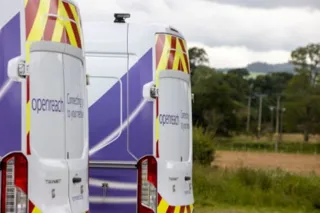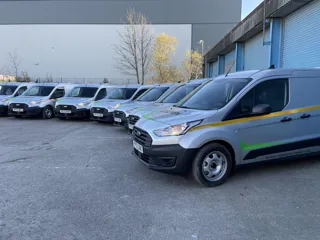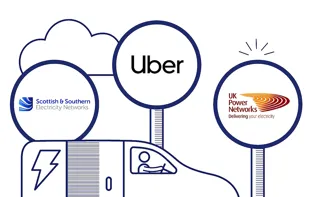Royal Mail has hit an electric vehicle (EV) milestone, adopting its 4,000th EV across its delivery and collection fleet as it works towards a goal of switching 5,000 vehicles by end of Spring 2023.
The roll-out includes many cities where low emission zones are in force, including London, Bristol, Glasgow, Cambridge and Oxford.
The 4,000th electric vehicle was deployed at Blackpool Delivery Office, where MP for Blackpool North and Cleveleys, Paul Maynard (pictured), made a visit to see the see the fleet in operation.
Blackpool Delivery Office will, over the coming months, have 90 electric vehicles on site with all delivery and collection functions operated by a fully electric fleet.
So far, more than 100 delivery offices across the country have made the transition to move to either full or part electric deliveries and collections. The first site that went live with an all-electric fleet was Bristol in June 2021 with Norwich expected to be our seventh all-electric delivery office this month.
Neil Barritt, Blackpool customer office manager, said: “It’s been great to have the opportunity to be leading the way in the rollout of Royal Mail’s new electric fleet.
“The new vans will become a familiar site on the streets of Blackpool and our posties are really excited about doing their bit to reduce air and noise pollution in the town.
“As a company, we pride ourselves with having the lowest reported CO2e emissions per parcel amongst major UK delivery companies and showcasing the way to achieving a more sustainable future for our fleet and our planet.”
Royal Mail already claims to have the lowest reported CO2e emissions per parcel amongst major UK delivery companies.
With lower maintenance requirements, the electric fleet promises more on-road time and higher levels of reliability, says Royal Mail.
They EVs can travel up to 130 miles in-between charges, depending on vehicle type, weather and load-size.
The fully electric vans also have up to 38% larger load space than the vehicles they have replaced, giving them additional capacity to deal with growing parcel volumes.






















Login to comment
Comments
No comments have been made yet.